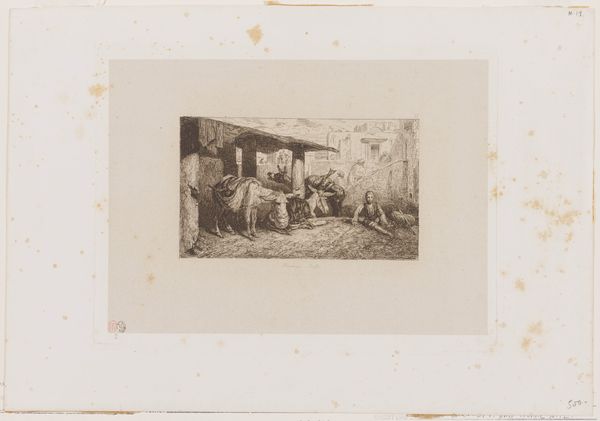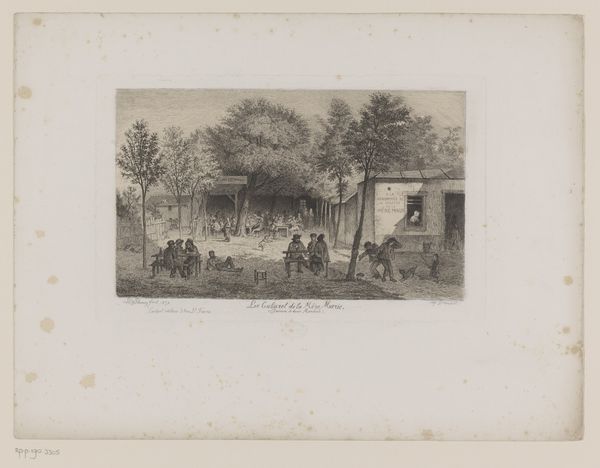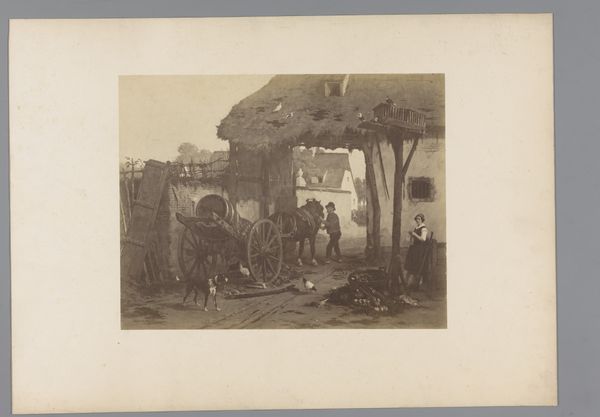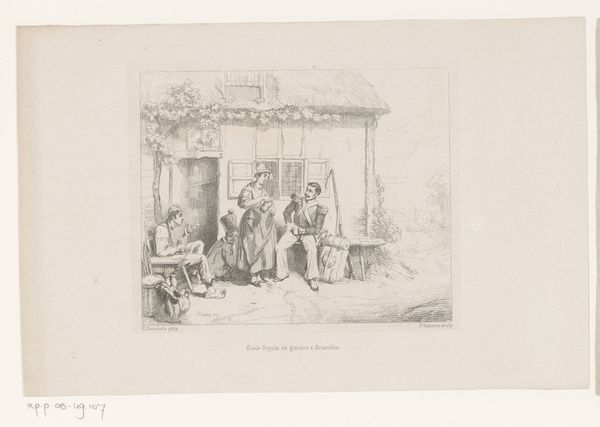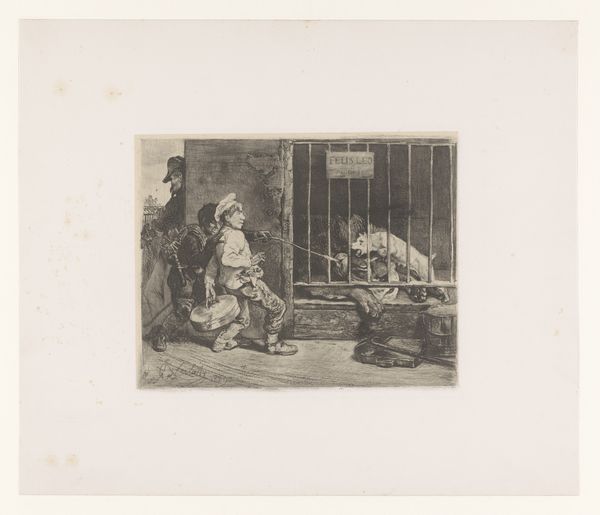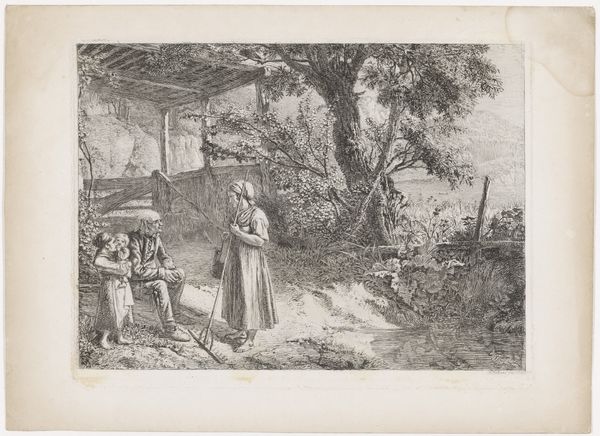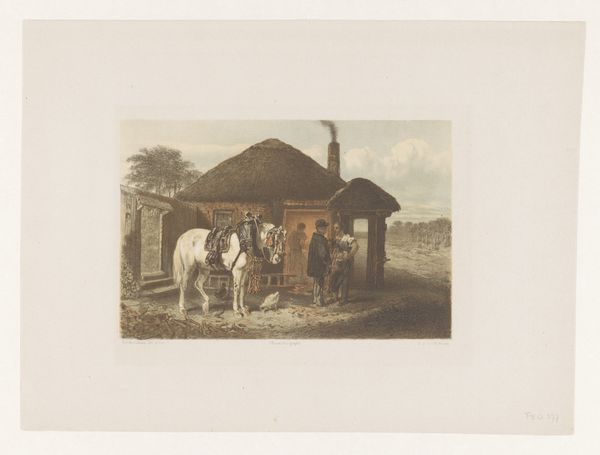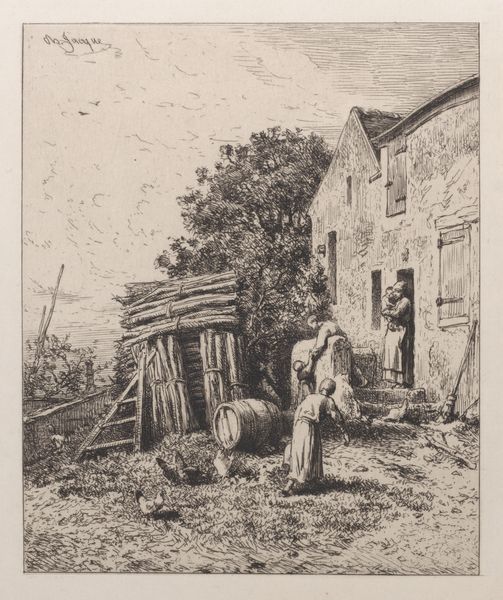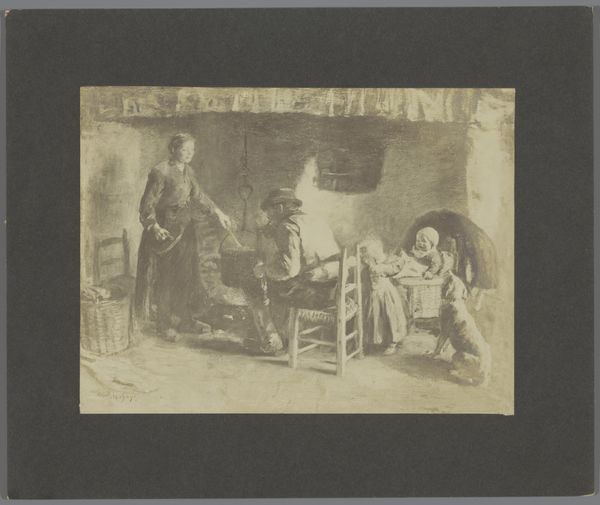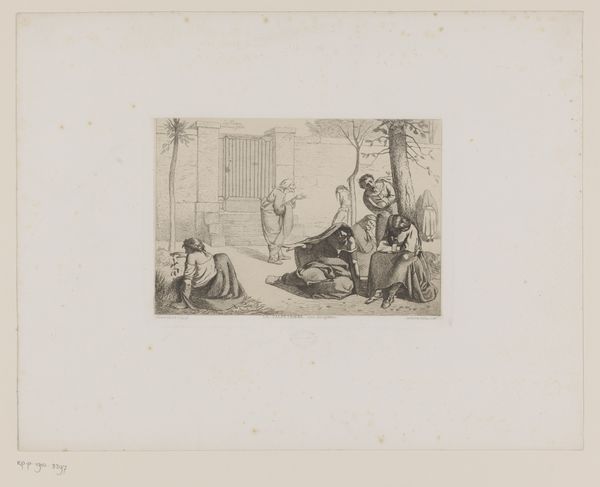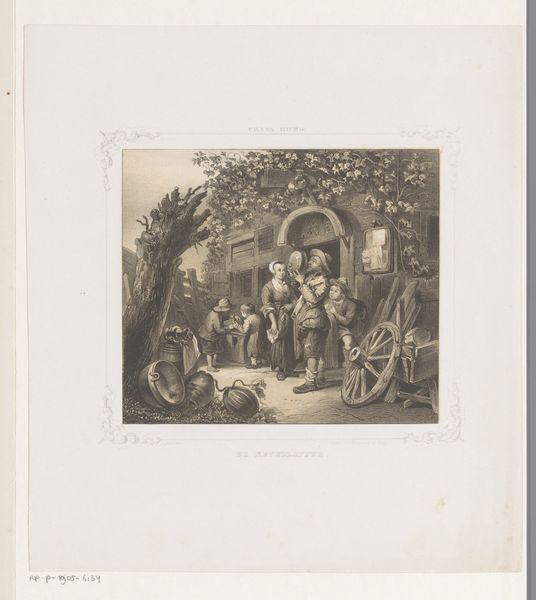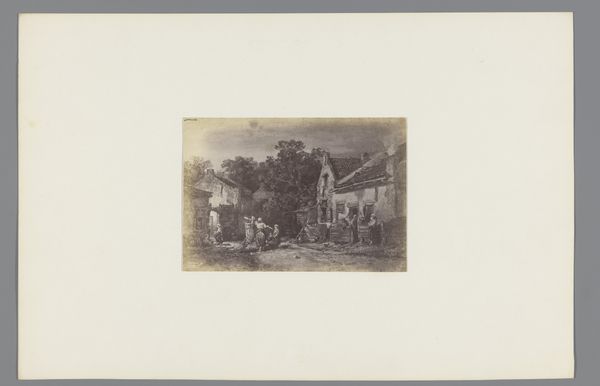
Dimensions: height 270 mm, width 351 mm
Copyright: Rijks Museum: Open Domain
Curator: So, here we have "Girl and Boy at a Farmhouse," a drawing created by Adolf Carel Nunnink sometime between 1847 and 1865, currently residing here at the Rijksmuseum. It’s a beautifully detailed pencil drawing. What strikes you first? Editor: Honestly? The light. It feels incredibly serene. There's a certain… softness. It's a slice of domesticity, but steeped in a kind of quiet labor and idyllic childhood. Curator: Absolutely, the luminescence is key! Notice how Nunnink captures the nuances of daily life. You’ve got a woman working a spinning wheel right in front of the farmhouse, and a young boy stands by her side. He’s clutching what seems to be a small stick or toy. In the background chickens are near a water well, the landscape softly unfurls, and I just love that little broom propped near the door! Editor: And it’s more than just pretty, isn't it? Thinking about that spinning wheel… what were the material conditions? What was required of the labor for even just one article of clothing in this period? It places them in a specific social and economic strata, doesn’t it? How does it romanticize or gloss over that? Curator: That's such an important point. Yes, the drawing absolutely engages with Romanticism, you see that, no question! I see this as a gentle glimpse into Dutch genre painting, or even, perhaps a bit of that Golden Age glow lingering in it, but your focus on material realities gives us the earthiness we might miss. But, also, note how even the placement of the children—one assisting, perhaps learning, one playing—emphasizes the labor of life, but the innocence, too. Editor: It's interesting that you read "assisting"; that small figure is centered, drawing a viewer's eye, yes, but is just as easily read as idling: children being present and adorning a landscape rather than contributing or, heaven forbid, becoming a burden! How we receive this hinges so heavily on how and from where we come to it. Curator: You are so right. What an interesting tension. It dances between sentimental depiction and, maybe, a more critical observation, especially if one sees that idling. I keep finding new things here... Even the way he uses light and shadow to render texture in the stonework is something to behold. What a layered work! Editor: Precisely. Nunnink’s idyllic landscape does ask us to look, and look again. We have to consider our own biases and nostalgias when seeing art like this. What seems simple contains multitudes.
Comments
No comments
Be the first to comment and join the conversation on the ultimate creative platform.
